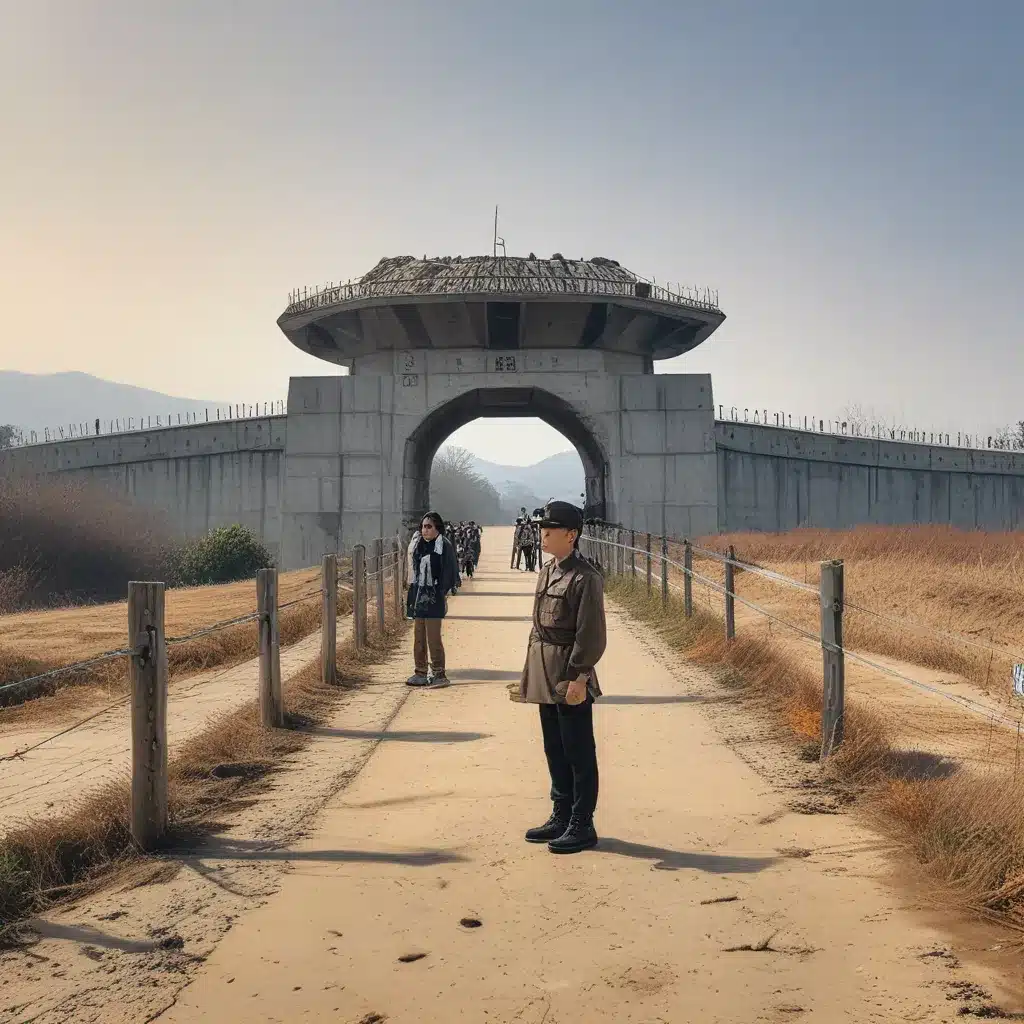
Traversing the DMZ: An Unforgettable Journey
Picture this: You’re standing on the edge of the world, with a military checkpoint on one side and the unknown on the other. The air is thick with tension, and you can almost feel the weight of history pressing down on your shoulders. Welcome to the Korean Demilitarized Zone (DMZ), the most heavily fortified border in the world, and the setting for one of the most intriguing day trips you’ll ever experience.
As a seasoned traveler, I’ve always been drawn to places that challenge my perceptions and broaden my understanding of the world. And the DMZ, with its unique blend of history, geopolitics, and sheer, awe-inspiring magnitude, is the ultimate destination for the curious and the adventurous.
The Journey Begins
My journey to the DMZ started with a bus ride from the bustling heart of Seoul, the vibrant capital of South Korea. As we left the city limits, the landscape slowly transformed, the towering skyscrapers giving way to rolling hills and dense forests. The closer we got to the border, the more the air seemed to crackle with a palpable sense of unease.
According to GetYourGuide, the DMZ tour typically lasts around 4-5 hours, with various stops along the way to provide a comprehensive overview of this fascinating and complex region. And as our bus pulled up to the first checkpoint, I could feel my heart begin to race with a mix of excitement and trepidation.
Peeking into the Past
Our first stop was the Imjingak Park, a symbolic gateway to the DMZ. As I stepped out of the bus, the sheer scale of the place was overwhelming. Towering monuments and memorials dotted the landscape, each one a testament to the tumultuous history of the Korean Peninsula.
Viator’s DMZ tour includes a visit to the Freedom Bridge, where prisoners of war were once exchanged. Standing on this bridge, I couldn’t help but imagine the countless stories of heartbreak and resilience that had played out here over the years.
But the real highlight of this part of the tour was the Unification Observatory, a vantage point that offered a breathtaking view of the DMZ and the North Korean countryside beyond. As I peered through the binoculars, I was struck by the stark contrast between the two sides – the lush, verdant landscape on the North Korean side, and the barren, heavily fortified border on ours.
Crossing the Line
After Imjingak Park, our tour group moved on to the Joint Security Area (JSA), the only place in the DMZ where visitors can actually cross the border and set foot in North Korea. As we approached the checkpoint, the atmosphere became even more charged with tension.
According to the Georgia government website, the JSA is a highly controlled and heavily guarded area, with strict rules and protocols in place to ensure the safety of visitors. Our guide briefed us on the do’s and don’ts, emphasizing the importance of maintaining a respectful and subdued demeanor at all times.
As I stepped across the line that divides the two Koreas, I felt a surge of adrenaline and a profound sense of connection to the complex history of this place. Standing in the infamous ‘Conference Room,’ where diplomats from both sides have met for tense negotiations, I couldn’t help but wonder about the countless conversations and decisions that had taken place within these walls.
Relics of a Divided Past
Our journey continued with a visit to the Tunnel of Aggression, one of the four known infiltration tunnels dug by North Korea in an attempt to invade the South. As we descended deep underground, the air grew damp and the walls closed in, and I couldn’t help but imagine the sheer determination and desperation that must have driven the North Koreans to undertake such a massive, clandestine operation.
Emerging from the tunnel, we made our way to the DMZ Theater and Exhibition Hall, where we were treated to a multimedia presentation that delved deeper into the history and significance of the DMZ. From the Korean War to the ongoing tensions between the two Koreas, the exhibition painted a vivid picture of the complex geopolitical landscape that has shaped this region.
Reflections on a Divided Nation
As our tour drew to a close, I found myself reflecting on the stark contrast between the bustling, modern city of Seoul and the eerie, heavily guarded border that separates it from its northern neighbor. It’s a stark reminder of the enduring legacy of the Korean War and the profound impact that partition has had on the people of this peninsula.
But the DMZ is not just a relic of the past – it is a living, breathing symbol of the hope and resilience of the Korean people. Despite the ever-present threat of conflict, the DMZ has become a hub of diplomacy and peacebuilding efforts, with both Koreas working towards the ultimate goal of reunification.
Conclusion
As I stepped back onto the bus, my head still swirling with the weight of the experience, I couldn’t help but feel a deep sense of gratitude for the opportunity to witness this remarkable place firsthand. The DMZ is not just a tourist attraction – it is a testament to the enduring human spirit, a reminder that even in the face of the most daunting challenges, the path to peace and understanding is always worth pursuing.
So if you find yourself in Seoul, South Korea, I urge you to take the time to explore the DMZ. It’s a journey that will forever change the way you see the world, and one that you’ll never forget.

